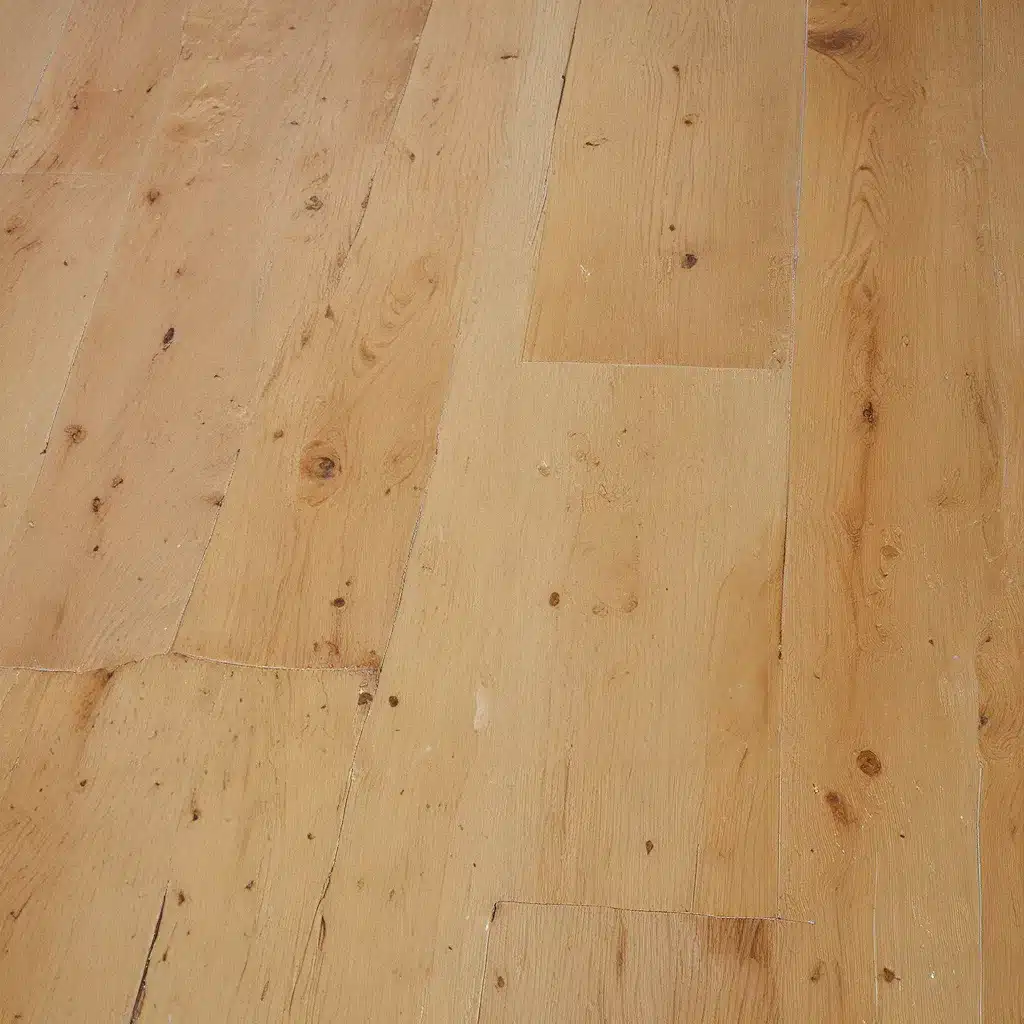Ah, the joys of homeownership – you never know what kind of nasty surprises might be lurking beneath the surface, literally. If you’re a new homeowner like me, you may have discovered the unpleasant truth that the previous owners weren’t the most responsible pet owners. And now, you’re left with the smelly, stubborn aftermath of their furry friends’ mischievous exploits.
I know the feeling all too well. When I first moved into my new place, I couldn’t wait to rip up the old carpets and start fresh. Little did I know, the subfloor was absolutely saturated with dog urine, leaving a stench that could knock out a skunk. I tried everything – vinegar, bleach, even sanding the floors down to the bare wood – but no matter what I did, that pungent aroma just wouldn’t go away.
Identifying the Root of the Problem
Before we dive into the solutions, let’s take a step back and understand what’s really going on beneath those floorboards. Urine, especially when left untreated for an extended period, can soak deep into the tongue-and-groove plywood of the subfloor, creating a nightmare scenario for any unsuspecting homeowner.
The acidic nature of urine can actually break down the wood fibers, leaving behind a permanent stain and odor that’s nearly impossible to eradicate. And let’s not forget about the potential for mold and mildew growth, which can exacerbate the issue and pose serious health risks.
Tackling the Stains and Odors
Alright, now that we know what we’re up against, let’s get down to business. Here’s a step-by-step guide to help you reclaim your home from the urine-soaked abyss:
Step 1: Assess the Damage
The first step is to thoroughly inspect the affected areas. How extensive is the damage? Is it localized, or has the urine spread throughout the entire subfloor? This will help you determine the best course of action and the level of effort required.
Step 2: Ventilate the Area
Once you’ve taken stock of the situation, it’s time to open up the space and let some fresh air in. This will help dissipate any lingering odors and prevent the growth of mold and mildew. If possible, consider setting up fans or a dehumidifier to speed up the process.
Step 3: Apply a Cleaning Solution
Now, it’s time to bring out the big guns. Enzymatic cleaners are often touted as the most effective solution for tackling old urine stains and odors. These specialized products contain natural enzymes that break down the organic compounds in the urine, essentially “eating” away the stain and smell.
Alternatively, you can try a vinegar-based solution. The acidity in vinegar helps neutralize the alkalinity of the urine, while also possessing antimicrobial properties to inhibit the growth of bacteria and fungi.
Whichever route you choose, be sure to thoroughly saturate the affected areas and let the solution sit for at least 30 minutes before blotting or scrubbing. Repeat this process as necessary until the odor and stains have been significantly reduced.
Step 4: Seal the Subfloor
Once you’ve tackled the immediate problem, it’s time to protect the subfloor from future incidents. Consider applying a sealant or primer specifically designed for subfloors. This will create a barrier that prevents any lingering odors or stains from seeping back through.
Step 5: Lay New Flooring
If, despite your best efforts, the urine stains and odors persist, it may be time to replace the subfloor altogether. This is a more involved and costly solution, but it’s often the only way to truly eliminate the problem from its root.
Before you start ripping up the old floor, be sure to research the best flooring options that can withstand the rigors of pet ownership. Solid hardwood, luxury vinyl plank (LVP), or even a high-quality laminate may be a wise investment to prevent future mishaps.
Preventing Future Accidents
Of course, the best way to deal with urine stains is to avoid them in the first place. If you’re a pet owner, be sure to train your furry friends to do their business outside, and clean up any accidents immediately. Regular deep cleaning of the floors can also help prevent the buildup of odors and stains over time.
And if you’re in the market for a new home, be sure to inspect the subfloor thoroughly during the walkthrough. A little due diligence now can save you a world of headaches (and nose-pinching) down the line.
Remember, tackling old urine stains can be a real challenge, but with the right approach and a little elbow grease, you can reclaim your home and restore it to its former glory. So, let’s get to work – your fresh-smelling floors await!
If you’re still struggling with stubborn urine odors or need help with any other cleaning or restoration tasks, don’t hesitate to reach out to the team at Adam Cleaning. We’re always here to lend a hand and make your home feel its absolute best.







